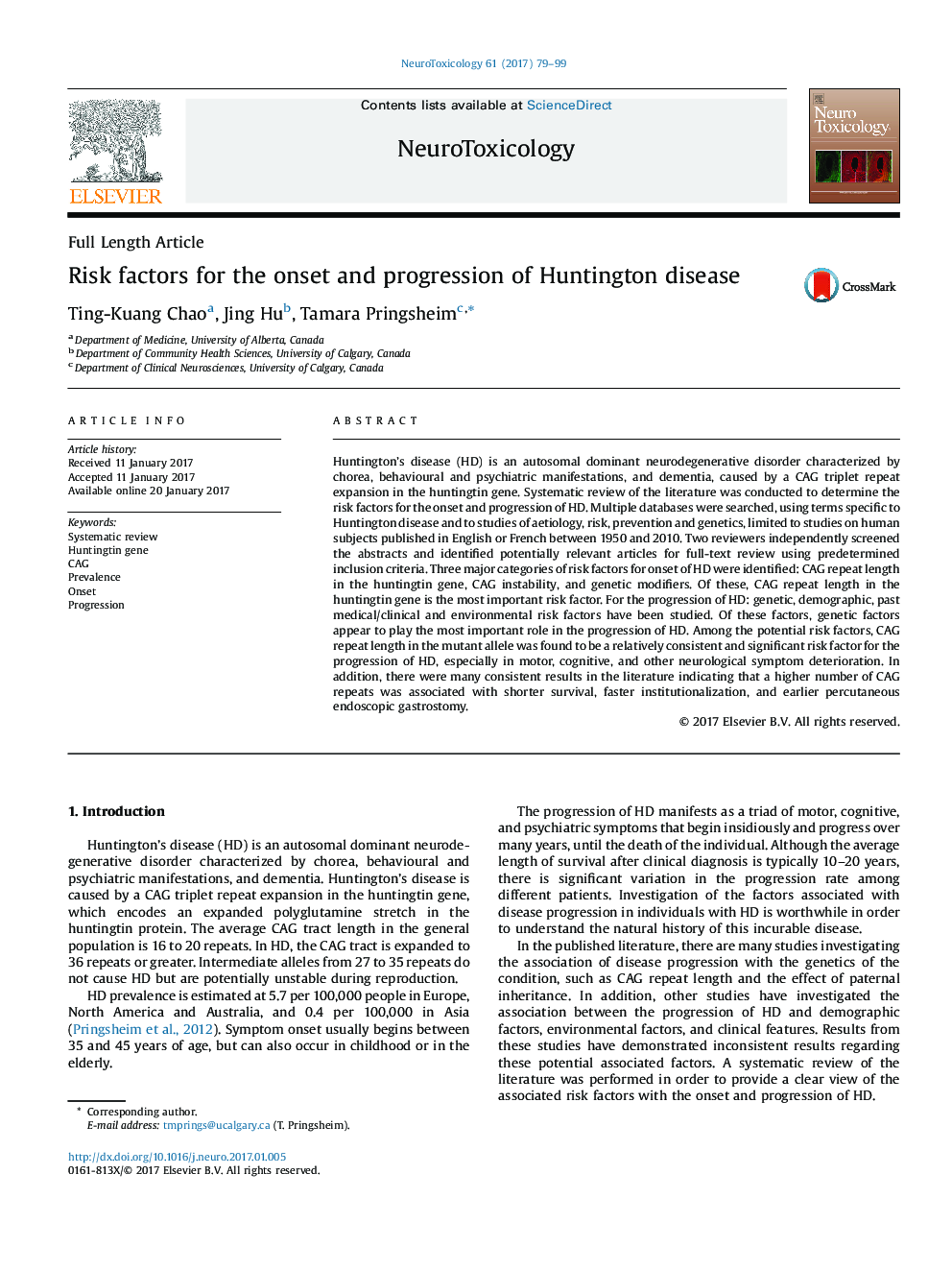| کد مقاله | کد نشریه | سال انتشار | مقاله انگلیسی | نسخه تمام متن |
|---|---|---|---|---|
| 5560912 | 1562033 | 2017 | 21 صفحه PDF | دانلود رایگان |
- Huntington disease (HD) is an autosomal dominant neurodegenerative disorder characterized by chorea, behavioural and psychiatric manifestations, and dementia.
- The disease is caused by a CAG triplet repeat expansion in the huntingtin gene.
- Huntington disease occurs in all races.
- Symptoms usually appear between the ages of 30 and 50, but the disease can also occur in children and seniors.
- CAG repeat length in the mutant allele was found to be a relatively consistent and significant risk factor for the progression of HD.
Huntington's disease (HD) is an autosomal dominant neurodegenerative disorder characterized by chorea, behavioural and psychiatric manifestations, and dementia, caused by a CAG triplet repeat expansion in the huntingtin gene. Systematic review of the literature was conducted to determine the risk factors for the onset and progression of HD. Multiple databases were searched, using terms specific to Huntington disease and to studies of aetiology, risk, prevention and genetics, limited to studies on human subjects published in English or French between 1950 and 2010. Two reviewers independently screened the abstracts and identified potentially relevant articles for full-text review using predetermined inclusion criteria. Three major categories of risk factors for onset of HD were identified: CAG repeat length in the huntingtin gene, CAG instability, and genetic modifiers. Of these, CAG repeat length in the huntingtin gene is the most important risk factor. For the progression of HD: genetic, demographic, past medical/clinical and environmental risk factors have been studied. Of these factors, genetic factors appear to play the most important role in the progression of HD. Among the potential risk factors, CAG repeat length in the mutant allele was found to be a relatively consistent and significant risk factor for the progression of HD, especially in motor, cognitive, and other neurological symptom deterioration. In addition, there were many consistent results in the literature indicating that a higher number of CAG repeats was associated with shorter survival, faster institutionalization, and earlier percutaneous endoscopic gastrostomy.
Journal: NeuroToxicology - Volume 61, July 2017, Pages 79-99
